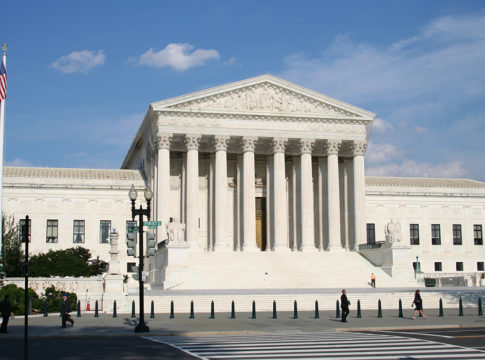Heather Schoell, a white, college-educated, stay-at-home mom living in the Capitol Hill neighborhood of Washington, D.C., was incredulous when a friend suggested that she should send her daughter to the local public school. “Honestly, I was like, ‘Right, D.C. Public Schools—we’re not even looking at that,’” Schoell recalled later. Maury Elementary wasn’t much to look at; its drab 1960s-era building had opaque, yellowing windows that made the place feel desolate. One hundred percent of its students were African American, most from low-income families. Schoell pictured mayhem behind those dreary windows, poor kids just running around. But her friend, who had volunteered at the school for twenty-five years, continued to press her: “Give it a chance, go inside and see,” she would say.
So Schoell did, when her daughter was two and a half. And what she saw wasn’t at all what she’d imagined. The principal at the time, an army veteran, exuded a confidence that put many of Schoell’s concerns to rest. The school was disciplined, teachers had high expectations for students, and the administration was eager to welcome new students.
Schoell was relieved to find that the school might be a real possibility. She and her husband couldn’t afford private school. And the couple, both raised in rural communities, refused to decamp to the suburbs. “We chose to come to D.C. because it was pretty much the antithesis of where we grew up,” she said. “We want our kids to have the benefits of everything that the city has to offer.”
In 2005, around the same time Schoell visited Maury, a group of mostly white parents was pushing the school system to start a preschool program there for three-year-old children. Capitol Hill was experiencing a baby boom, and there weren’t enough spots at local preschools to go around. A city councilman got involved, and by the fall, a publicly funded program for three-year-olds was off the ground.
This was the beginning of a transformation at Maury, starting with its youngest students. Whereas the upper grades at the school had just one classroom apiece, all of which were 100 percent black, the program for three-year-olds had four classrooms that were racially and socioeconomically mixed. Maury is now an integrated school—to the pleasure, Schoell says, of everyone involved.
Maury’s hopeful story is part of a larger trend. In the middle of the last decade, in urban communities across America, middle-class and upper-middle-class parents started sending their children to public schools again—schools that for decades had overwhelmingly served poor and (and overwhelmingly minority) populations. From Schoell’s Washington neighborhood to northwest Denver, Brooklyn, and beyond, white families in particular have come back to local schools: not in dribs and drabs, but in droves. In one D.C. high school, students sarcastically called it “the Caucasian invasion.”
On the whole, this is very good news. It’s creating the best opportunity in a generation to create racially and socioeconomically integrated public schools, which research shows can benefit rich and poor, white and minority students alike.
But there’s a problem: Once changes at a school are underway, how can they be stopped from turning the building into an affluent, white enclave—especially if the surrounding neighborhood becomes mostly affluent and white? Public policy must play a role. Here are the options:
1. Eliminate the boundary system entirely. Nobody would have a claim to a particular school, even the one down the block. All families would apply to several schools, and a computer would determine enrollments based on a mix of a lottery, geographic proximity, and the goal of socioeconomic balance.
2. Redraw boundaries to engineer more schools with socioeconomic balance. This could take a couple of different forms. If a school is near a border that separates an affluent neighborhood and a poor one, its boundaries could be drawn to ensure enrollment from both communities. Another option is to ensure that all schools have a large number of out-of-boundary slots reserved for poor kids.
3. Create magnet or charter schools in strategic locations to draw middle-class and poor students alike. This strategy has worked for a generation or longer—at least, when officials come up with magnet schools that are worth attending. For instance, officials could turn an under-enrolled high-poverty school into a Montessori school or bilingual immersion program, offerings that are attractive to many middle-class parents. Charter schools could play this magnet role, too.
Cities nationwide face a tremendous opportunity. Parents are doing their part. Now policymakers need to do theirs.
This essay, which first appeared in the Education Gadfly Weekly, is adapted from Michael J. Petrilli’s brand-new book, The Diverse Schools Dilemma: A Parent’s Guide to Socioeconomically Mixed Public Schools.



